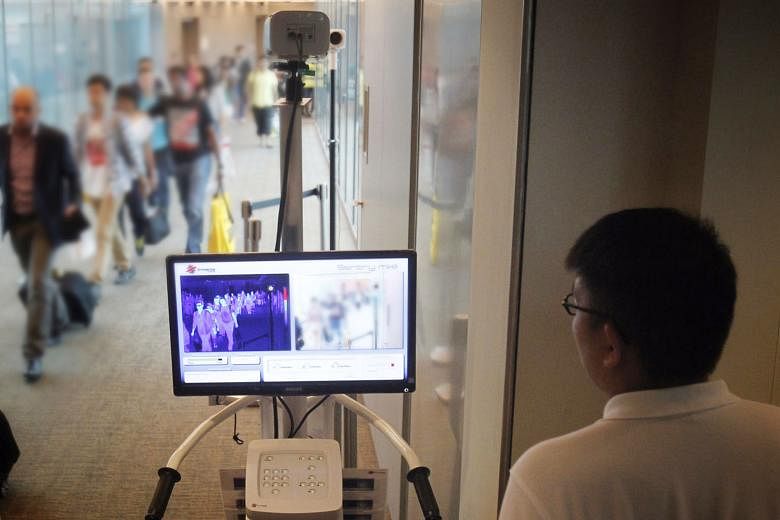In April, Mr Tom Stuker, 63, became the world's most frequent flier, logging 18 million miles of air travel over the last 14 years.
If his travelling behaviour is typical of business fliers, he may have eaten 6,500 inflight meals, drunk 5,250 alcoholic beverages, watched thousands of inflight movies and made around 10,000 visits to airplane toilets.
He would also have accumulated a radiation dose equivalent to that of about 1,000 chest X-rays.
COSMIC RAYS COMING AT YOU
You might think the radiation dose comes from the body scanners and baggage X-ray machines.
But radiation doses from airport security checks are trivial.
The major source of radiation exposure is from the flight itself.
This is because at high altitude, the air gets thinner. The farther you go from the earth's surface, the fewer molecules of gas there are per volume of space.
Thinner air means fewer molecules to deflect incoming cosmic rays - radiation from outer space.
In fact, it is the accumulation of radiation dose that is the limiting factor for the maximum length of manned space flights. Too long in space and astronauts risk cata- racts, cancer and potential heart ailments when they return home.
So, what would Mr Stuker's cumulative radiation dose be and what are his health risks?
It depends entirely on how much time he has spent in the air.
Assuming an average flight speed of 550mph, his 18 million miles would translate into 32,727 hours or 3.7 years of flight time.
The radiation dose rate at typical commercial airline flight altitude of 35,000 feet is about 0.003 millisieverts per hour.
By multiplying the dose rate by the hours of flight time, we can see that Mr Stuker has accumulated about 100mSv dose of radiation.
The primary health threat at this dose level is an increased risk of some types of cancer later in life.
Studies of atomic bomb victims, nuclear workers and medical radiation patients have allowed scientists to estimate the cancer risk for any particular radiation dose.
Assuming that low doses have risk levels proportionate to high doses, then an overall cancer risk rate of 0.005 per cent per mSv is a reasonable estimate.
Thus, Mr Stuker's 100mSv dose would increase his lifetime risk of contracting a potentially fatal cancer by about 0.5 per cent.
CONTEXTUALISING THE RISK
The question is whether that is a high level of risk.
Most people underestimate their risk of dying from cancer. Although the exact number is debatable, about 25 per cent of men ultimately contract a potentially fatal cancer.
Mr Stuker's 0.5 per cent cancer risk from radiation should be added to his baseline risk - from 25 per cent to 25.5 per cent.
A cancer risk increase of that size is too small to measure in a scientific way, so it must remain a theoretical increase in risk.
If you want to know your cancer risk from flying, estimate your airline miles over the years.
If you have clocked 370,000 miles, you would have a 0.01 per cent increase in the risk of contracting cancer.
However, most people do not fly 370,000 miles, which is equal to 150 flights from Los Angeles to New York, within their lifetimes.
So, for the average flier, the increased risk is far less than 0.01 per cent.
List all the benefits that you have derived from your air travel, such as job opportunities, vacation travel and family visits, and look at your increased risk again.
If you think your benefits have been meagre compared to the elevated cancer risk, maybe it is time to rethink flying.
But for many people, flying is a necessity of life and the small elevated cancer risk is worth the price.
- Timothy J. Jorgensen is director of the Health Physics and Radiation Protection Graduate Programme and Associate Professor of Radiation Medicine at Georgetown University in the United States.
- This article first appeared in The Conversation at http://theconversation.com, a website which carries analysis by academics and researchers.

